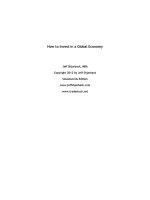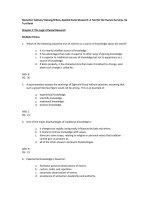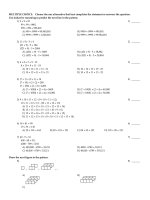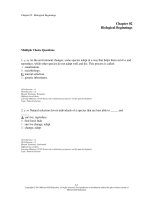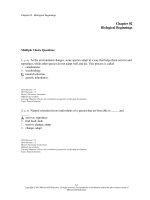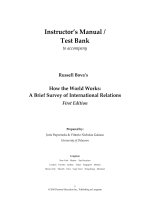Managing in a global economy demystifying international macroeconomics 2nd edition marthinsen test bank
Bạn đang xem bản rút gọn của tài liệu. Xem và tải ngay bản đầy đủ của tài liệu tại đây (6.72 KB, 1 trang )
1. The circular flow diagram divides the economy into:
a. Domestic sector and foreign sector.
b. Agricultural sector and non-agricultural sector.
*c. Producer sector and consumer sector.
d. Operating sector and non-operating sector.
e. Real sector and nominal sector.
2. The circular flow diagram divides the economy into:
*a. Producer sector and consumer sector.
b. Real sector and nominal sector.
c. Domestic sector and foreign sector.
d. Operating sector and non-operating sector.
e. Winners and losers.
3. The circular flow diagram divides the economy into:
a. Winners and losers.
b. Real sector and nominal sector.
c. Domestic sector and foreign sector.
d. Agricultural sector and non-agricultural sector.
*e. Producer sector and consumer sector.
4. The circular flow diagram divides the economy into:
*a. Household sector and business sector.
b. Real sector and nominal sector.
c. Domestic sector and foreign sector.
d. Agricultural sector and non-agricultural sector.
e. None of the above is correct.
5. One of the major points of the circular flow diagram is:
*a. If GDP rises due to increased production, incomes earned from producing
GDP must rise.
b. Increasing gross private domestic investment is the best way for a nation to
grow.
c. Increasing government spending is the best way for a nation to grow.
d. The top and bottom flows are proof that most economies should always be in
equilibrium.
e. None of the above.
